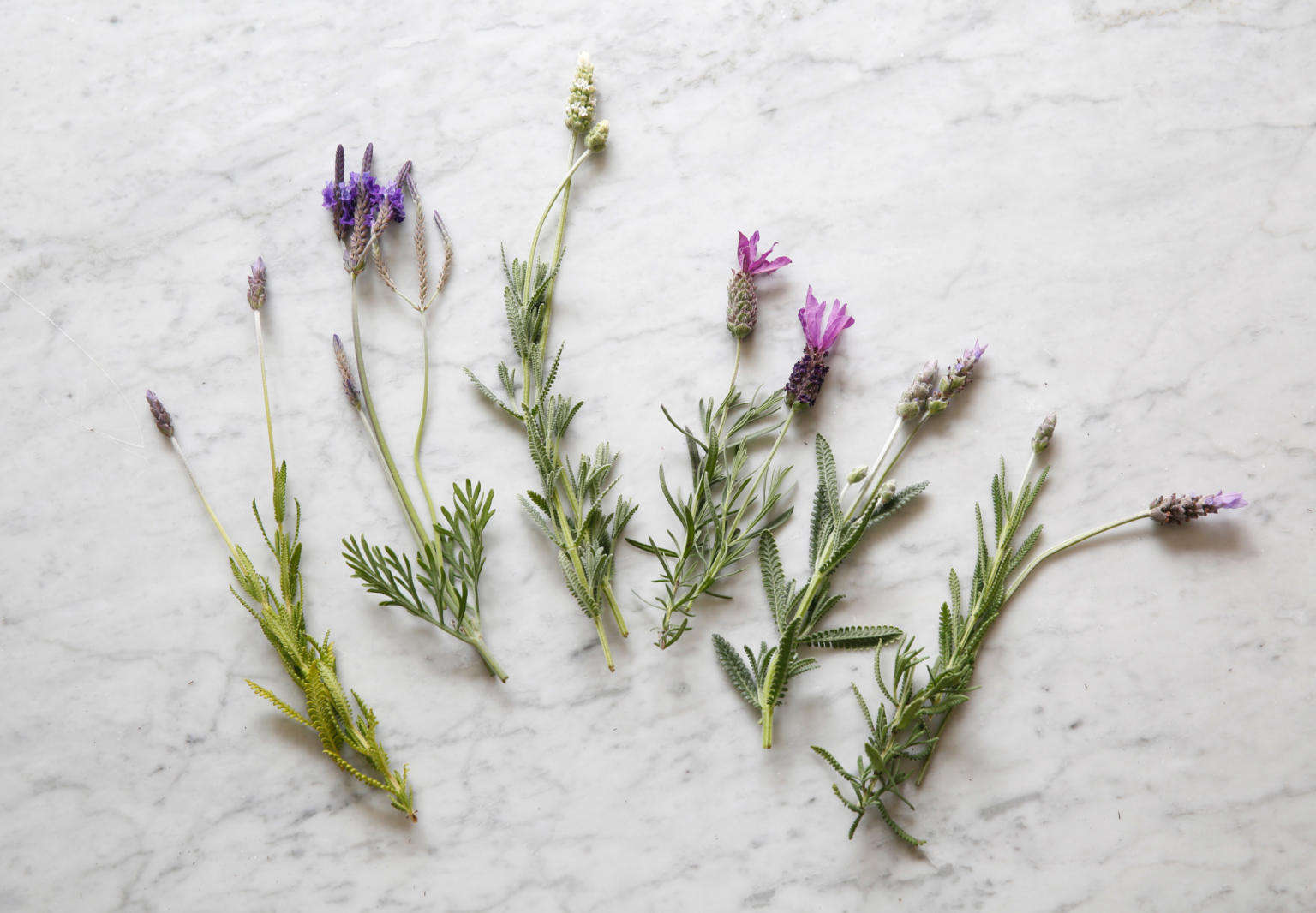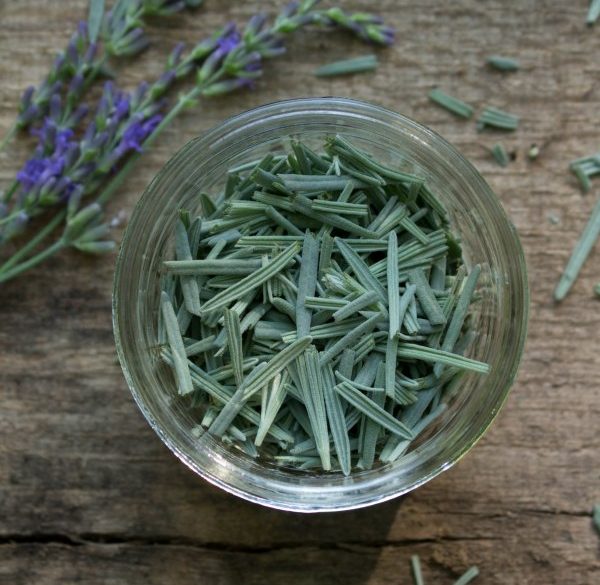
Because they are grown in excessive shadow, lavender plants frequently have curled leaves. Lavender needs six hours of sunlight each day (preferably full sun). If a lavender plant’s leaves begin to curl, it’s usually an indication of stress brought on by a lack of light or a fungus.
Additional root causes of curled-up leaves include:
- excessive shade
- Because of the extreme heat
- simply because they’re inside
- Watering down
- Stress-related fungal illness as a result of overwatering
If lavender leaves curl up due to extreme heat, do not turn to more frequent watering because this is a natural adaptation to living in arid climates, and the lavender may still be in good condition.
Continue reading to discover why lavender leaves curl and whether you need take action to fix the problem.
Table of Contents
Lack of Light Causing Lavender Leaf Curl
The most frequent reason for lavender leaves to curl downward is because it is situated in a dimly lit region.
The lavender plant is indigenous to Southern European nations like Spain, Italy, France, and Portugal, where it thrives in sandy soils with full sun exposure and infrequent rainfall.
In terms of its foliage emitting the greatest perfume and exhibiting the most flowers, lavenders thrive in these conditions. (Read my post on 7 ways to boost a lavender plant’s blossoms.)
The first indication of stress in lavender plants is the curling of their leaves if they are grown in shadow (less than six hours of sun per day). Other indications that lavender needs more light include:
- slower growth
- Spindly or leggy appearance
- Lack of summertime blooms
You should either move the lavender to a more sunny area of your garden if it is exhibiting these signs of stress.
If you don’t have enough room in your garden borders to do this, think about moving the lavender to a pot, which will offer you more flexibility in where to place it to get the most sun.
Commercial lavender producers claim that the best harvesting seasons (flowers, potpourri, oils for scent, etc.) occur on the hottest, driest, sunniest years with a nice breeze.
The leaves of lavender curl up as they become more shaded, and fewer blossoms will be visible.
After a few bright days, your lavender’s leaves should grow back to normal if you place it in the sunlight.
Lavenders That are Indoors
In general, lavender prefers to live outdoors, with full sun and the occasional wind to lower the risk of fungal illness, although lavender ‘Anouk’ can adapt to indoor settings better than most lavenders.
Many people have a tendency to overwater indoor lavenders, which can also cause the leaves to curl up or possibly droop and turn brown. The air in the house is frequently too calm for lavenders (which is a sign of fungal infection).
(To find out how frequently to water lavenders, read my article.)
Under Watering Lavenders
Although it can happen, underwatering can cause lavender leaves to curl up.
Lavenders grow well in sandy soils and are drought tolerant. They also do well in hot climates with prolonged periods of intense sunlight.
Therefore, overwatering lavender causes more issues than underwatering (established lavenders rarely require watering in temperate climates).
However, if there hasn’t been any rain or watering for longer than two weeks, it’s extremely hot outside, and the lavender is planted in a pot or container that’s too tiny or made of a material that warms up quickly, like metal, underwatering lavenders could be an issue.
Plant lavender in pots or containers with a diameter of 12 to 16 inches so that the soil has room for the roots to develop properly and have access to water and nutrients.
Avoid using pots made of metal or plastic since they act as heat conductors, heating up the soil and causing it to dry up more quickly on hot days.
Clay, terracotta, and ceramic pots with drainage holes in the bottom work best for growing lavender.
(Read my post on picking the ideal container for lavenders.)
Lavender Leaves Curling up in Hot Weather
Lavenders are drought-tolerant plants that do well in hot, arid climates.
However, lavenders can appear to be wilting with their leaves curled up on a particularly hot day with intense sunlight and high temperatures.
Because lavender thrives in hot, dry conditions, this is not necessarily an indication of stress, but it is an adaptation for the warmest days of the year, and it is very normal for this to develop.
The leaves will no longer be curled and the plant will appear as normal if you return to the lavender later in the day or possibly in the chilly evening.
If the leaves of your lavender plant are curling up because it is too hot outside, resist the urge to water it more frequently. In temperate locations, lavender only needs to be watered seldom, if at all.
When growing season is underway, water lavender every two weeks in arid regions like southern California or southern Egypt.
(To learn how to water lavender in hot weather, read my post.)
Watering your lavender too frequently will hurt it because it needs the soil to dry out in between waterings.
Lavender Leaves Curling due to Disease

However, lavenders that are overwatered, grown in soils with poor drainage, or grown in humid environments may curl up as an indication of stress brought on by a fungus.
This usually occurs in conjunction with other symptoms like:
- becoming brown or yellow leaves
- overall appearance of drooping
- There are fewer blooms and less fragrant leaves.
If this is the case, the soil’s constant moisture has caused the lavender to contract a fungal disease.
Lavender has adapted to the well-draining, sandy soils with low water retention requirements of its native environment.
Rich or clayey soils, excessive irrigation, or damp soil will encourage the growth of fungal infections that damage lavender.
Due to lavender’s resistance to drought and intolerance of moist soils, overwatering is far more likely to be the cause of your lavender plants’ curling leaves than underwatering.
Plant lavender on sandy soil that drains well. Consider growing lavender in pots if your garden soil contains a lot of clay so you can adjust the soil profile and make sure it drains well (it is very difficult to amend clay soils for lavender growing).
Recreate the ideal soil conditions for lavender by amending the soil with roughly one third sand and two thirds potting soil or compost. Minimize watering (only water if there has been hot weather and no significant rainfall for two weeks).
Lifting the lavender out of the ground to check the roots for symptoms of infection is crucial if you want to revive a plant that has fungal disease (soft, rotten looking roots).
With a pair of sterile pruners, remove any infected roots, leaves, or stems to stop the infection from spreading. Then, replant the lavender in a pot or container with fresh soil that drains well, and treat the soil with an organic fungicide.
Read articles with more information and step-by-step instructions on how to save lavender plants from fungal disease to learn more.
If you treat an illness in lavender as soon as possible, it can recover.
(Read my post to find out how to mix the perfect soil for lavender plants.)
Key Takeaways:
- Typically, curled-up lavender leaves are a sign that the plant is receiving too much shade. Lavender grow best in full sun.
- Lavender grown inside has leaf curling more frequently as a result of inadequate lighting, excessive watering, or high indoor humidity.
- Underwatering is rarely a problem for lavender plants. However, if your lavender is in a small pot or containers—perhaps made of metal or plastic—the pot could heat up, increasing soil evaporation and possibly creating conditions that are too dry for even lavender to survive. As a result, the leaves might curl due to a lack of water.
- On the hottest days, lavender leaves may curl up as a coping mechanism for living in extreme heat. Do not increase watering because lavenders appreciate somewhat dry circumstances and frequently recuperate by the cold evening.
- Lavenders that have fungal disease may droop or have leaves that curl and turn brown or yellow. Lavenders prefer dry, sandy soils with intermittent watering over moist, clayey soils.
